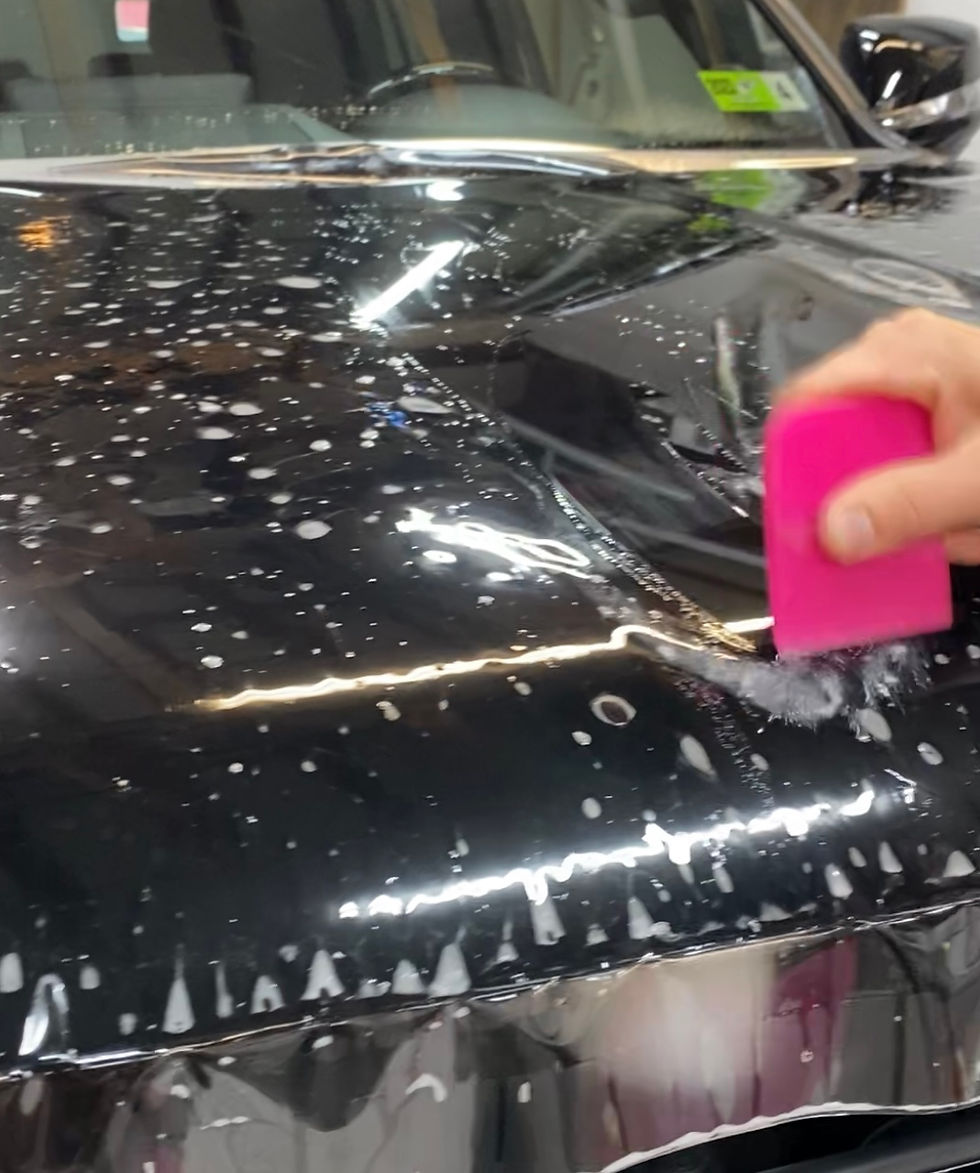Winterizing Your Car: How PPF Helps in Harsh Weather Conditions
- shade9llc
- Oct 9, 2023
- 3 min read
As the winter season approaches, it's time to prepare your vehicle for the challenges that cold and harsh weather can bring. One crucial aspect of winterizing your car is protecting its exterior from the elements. Paint Protection Film (PPF) is a powerful ally in this endeavor, offering a layer of defense that can make a significant difference in maintaining your vehicle's appearance and value during the winter months.

Understanding Winter's Toll on Your Car
Winter weather can be unforgiving to your vehicle's exterior. Snow, ice, road salt, and freezing temperatures can wreak havoc on your car's paint, causing damage such as:
Paint Chips: Loose gravel and debris mixed with snow and ice on the road can lead to chips in your car's paint, leaving it vulnerable to corrosion.
Scratches: Snow brushes, ice scrapers, and even the act of brushing off snow can introduce scratches and swirl marks to your car's finish.
Corrosion: Road salt and de-icing chemicals used to melt snow and ice can accelerate corrosion on your car's metal surfaces, leading to rust problems down the line.
Cracking and Fading: Drastic temperature fluctuations can cause your car's paint to contract and expand, potentially leading to cracking and fading over time.
The Role of Paint Protection Film (PPF)

PPF, also known as clear bra or clear film, is a thermoplastic urethane film that is applied to the exterior of your vehicle to protect it from damage. Here's how PPF can help your car withstand the challenges of winter:
Prevents Paint Chips: PPF acts as a protective shield, absorbing the impact of road debris and preventing chips in your car's paint. This is especially important in winter when gravel and salt on the road pose a higher risk.
Scratch Resistance: PPF is designed to be scratch-resistant, so it helps shield your vehicle's paint from the minor abrasions that can occur during winter maintenance routines like scraping off ice or brushing off snow.
Chemical Resistance: PPF is also resistant to the corrosive effects of road salt and de-icing chemicals. It forms a barrier that prevents these substances from directly contacting your car's paint.
Temperature Tolerance: PPF is engineered to withstand a wide range of temperatures. It can expand and contract with temperature changes, reducing the risk of paint damage due to thermal stress.
UV Protection: PPF provides UV protection, which can help preserve your car's paint finish and prevent it from fading or deteriorating over time.
The Installation Process
Installing PPF requires skill and precision, so it's advisable to have it done by a professional. Here's an overview of the installation process:
Surface Preparation: The car's exterior is thoroughly cleaned to ensure there is no dirt or contaminants that could affect the adhesion of the film.
Custom Cutting: PPF is custom-cut to fit the specific make and model of your car, ensuring a precise and seamless installation.
Application: The film is carefully applied to the vehicle's exterior, and any bubbles or imperfections are smoothed out during the process.
Curing: The film is allowed to cure, which usually takes a few days, to ensure it adheres properly and provides optimal protection.
Long-Term Benefits
Investing in PPF for your car not only protects it during the winter season but also provides long-term benefits. It preserves your vehicle's resale value by maintaining its appearance and preventing damage that can lead to costly repairs.
As you prepare your car for the winter months, consider the benefits of Paint Protection Film. It's an effective way to safeguard your vehicle's paint and finish, ensuring that it remains in top condition despite the challenges of harsh weather conditions. Winterizing your car with PPF is a smart investment that pays off in the long run, keeping your vehicle looking great for years to come.









Comments